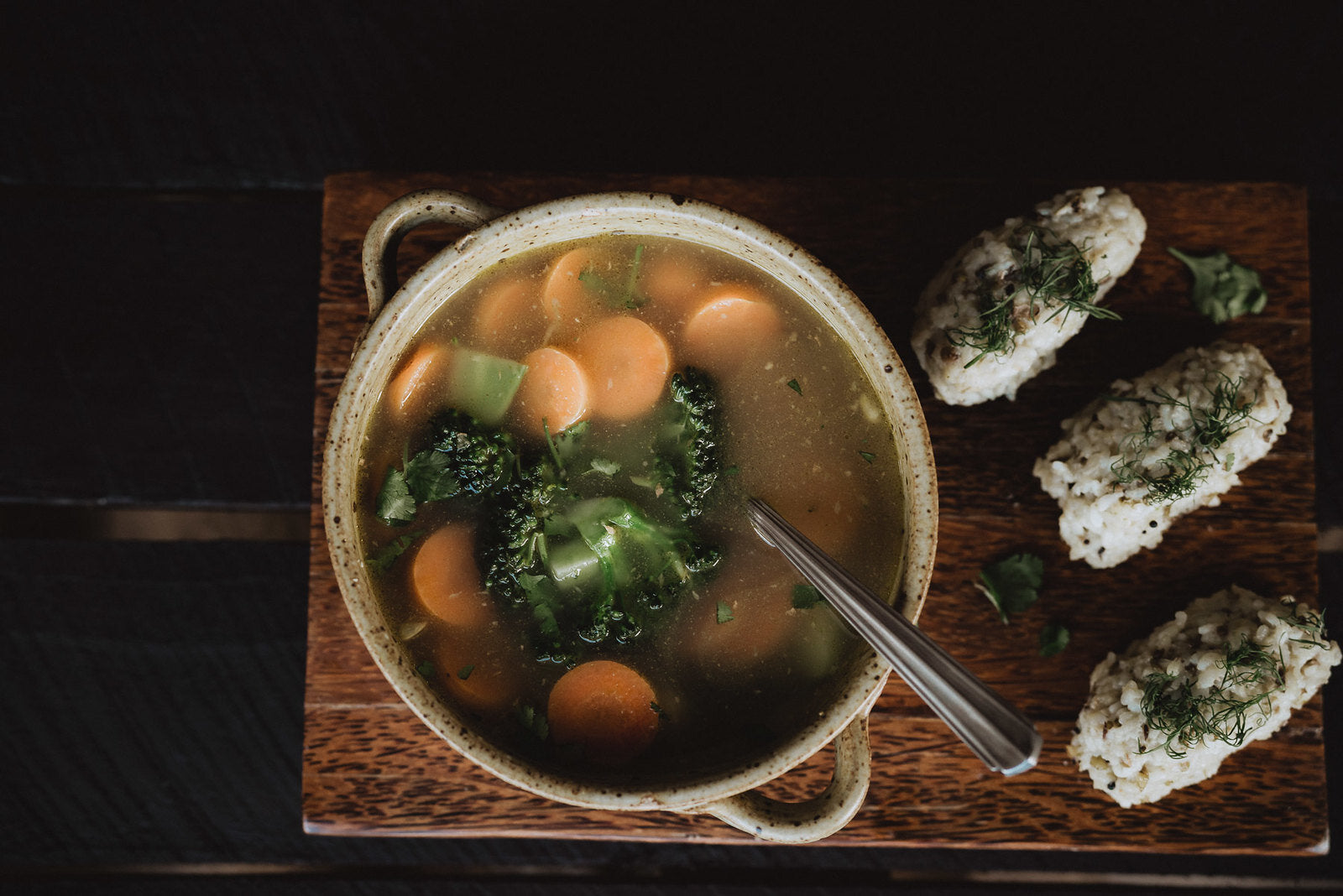
We nourish our mind through the food we eat
We nourish our mind through the food we eat. The subtle essence of food impacts how our mind functions. Ayurveda describes the subtle essence of food, and all of life, in terms of the maha gunas - sattva (peace), rajas (action) and tamas (dullness / inertia). Sattvic foods are in line with our true nature, which is joy. Some food is more sattvic, like whole grains, legumes, and many fruits and veggies. Other food is quite stimulating, or rajasic - like chilis and garlic. Tamasic foods, like meat or processed and frozen food, create dullness in the body and mind.
At Hale Pule we recommend incorporating mostly sattvic food into your diet. The peaceful and harmonious energy inherent in sattvic food contributes to a balanced mind and enthusiasm for life.
One of our favourite sattvic recipes at Hale Pule is for saucha soup. Saucha - one of Patanjali’s niyamas - means purity. With a simply spiced, clear broth and freshly cooked vegetables, this pure, simple soup hydrates and nourishes. It’s great to enjoy year-round because including the appropriate amount of moisture in meals will calm vata and pitta and aid digestion.
Saucha soup
Augmenting & extractive
Serves 4
Preparation time: 45 minutes
You'll need
2 Tbsp ghee or Sunflower oil
½ tsp mineral salt
1 tsp fresh chopped ginger
1 tsp fresh chopped turmeric
½ tsp mustard seeds
1 tsp cumin powder
2 tsp coriander powder
¾ cup broccoli
1 cup bok choy
2 cups carrots
6-8 cups water
Small squeeze of lime
Here's how
Heat the oil in a small pan and simmer the salt, ginger, turmeric and mustard seeds until the seeds pop and the aroma is present. Add in the cumin, coriander and simmer briefly. Add the carrots, bok choy and broccoli and stir to cover with the oil and spices. Add the water, stir, cover and simmer until the vegetables are tender and can be pierced with a knife. Turn off the heat and add the squeeze of lime. Cover and let sit 5 minutes.
Enjoy this soup alongside rice and mung bean dumplings. To create a dumpling-like texture, follow our simple kitchadi recipe, and use less water - about 4 cups.

Sattvic sprouts
A variation is to top the soup with sprouts. Our first choice is mung sprouts, but you could also use broccoli or clover sprouts which are less rajasic than others. Other kinds of sprouts, like alfalfa, radish and onion, are more stimulating and rajasic. How can you tell which sprouts to use? Pay attention to the primary taste. Onions and radishes are quite pungent and therefore stimulating, even irritating, to the digestive tract.
For a complete list of sattvic, rajasic and tamasic foods, click here.
Visit our Ayurveda Lifestyle page for kitchen essentials
